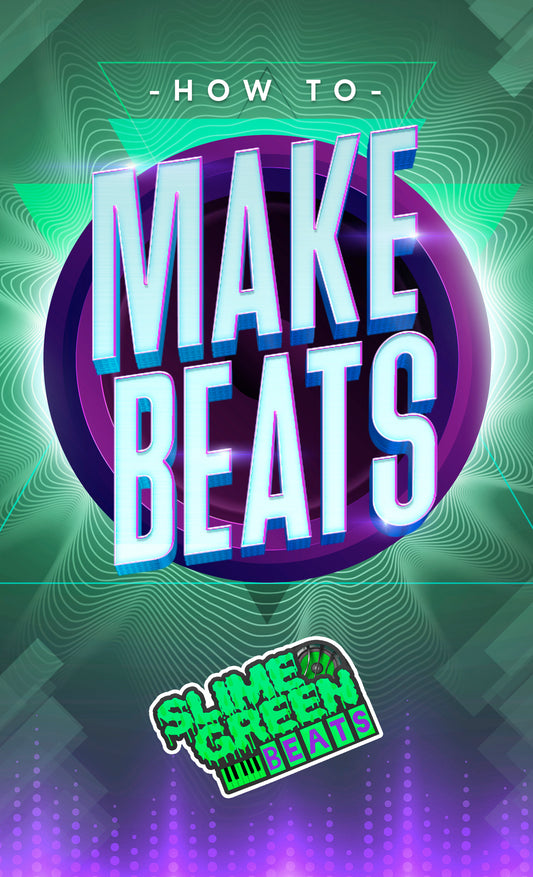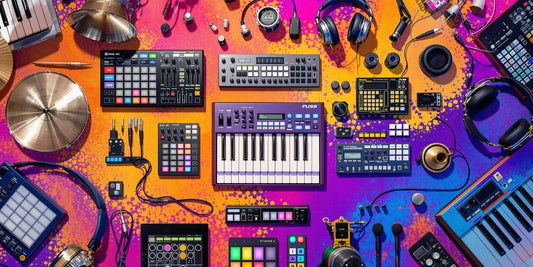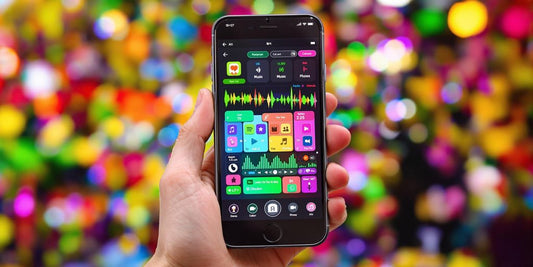Ever wondered how to make beats that really pop? You're in the right place. Whether you're just starting out or looking to refine your skills, this guide will walk you through making your own beats from scratch. We'll cover everything from picking the right gear to mixing and mastering your final track. Ready to get started? Let's dive in!
Key Takeaways
- Start with the basics: Choose your gear and set your tempo.
- Drum patterns are your foundation. Get creative with them.
- A catchy bassline can make or break your beat.
- Melodies add flavor. Don't be afraid to experiment.
- Mixing is crucial. Balance your sounds for the best result.
Unleashing Your Inner Beatmaker: The First Steps
Choosing Your Sonic Arsenal
So, you wanna make beats, huh? Well, first things first, you gotta pick your weapons. No, not actual weapons, but your digital audio workstation (DAW). It's like your musical playground, where all the magic happens. You've got options like Ableton Live, FL Studio, and even GarageBand if you're just dipping your toes in. Think of it like choosing between a lightsaber or a magic wand—each has its own quirks.
Once you've got your DAW, it's time to gather some sounds. Most DAWs come with a bunch of built-in sounds, but don't be afraid to explore the wild world of plugins and virtual instruments. They're like the toppings on your pizza—some are classic, some are weird, but all can add flavor to your beats.
Setting the Perfect Tempo
Now, let's talk tempo. It's basically the heartbeat of your track. Do you want your listeners to dance like they're at a rave, or sway like they're at a chill coffee shop? The tempo sets the mood. Most pop songs hang around 120 BPM, but feel free to crank it up or slow it down.
Here's a quick tempo guide:
- 60-80 BPM: Slow and steady, like a lazy Sunday morning.
- 100-120 BPM: The sweet spot for a lot of genres, think pop or hip-hop.
- 140+ BPM: Fast and furious, perfect for electronic or dance music.
Finding Your Groove
Alright, you've got your DAW and tempo, now it's time to find your groove. This is where you let your inner rhythm shine. Start with a simple drum pattern. Kick, snare, hi-hat—these are your best friends.
Experiment with different patterns and see what feels right. Don't be afraid to mess around and make mistakes. Sometimes the best grooves come from happy accidents. Remember, perfection is overrated. Let the groove guide you, and soon you'll be crafting beats that make heads nod and feet tap.
"The secret to making beats? Just start. Don't wait for the perfect sound or the perfect moment. Dive in, get messy, and have fun. That's where the magic happens."
Drumroll, Please: Crafting Killer Drum Patterns

Selecting the Right Drum Kit
Alright, let's kick things off with the drum kit. Think of it as your trusty sidekick in the beat-making saga. You want a kit that's got your back, whether you're going for a classic hip-hop vibe or a futuristic electronic feel. Spend some quality time with your DAW (that's Digital Audio Workstation for the uninitiated) and explore the virtual drum kits it offers. If you're feeling fancy, you might even want to invest in a MIDI controller or a drum pad. It's like giving your creativity a turbo boost!
Creating a Basic Beat Loop
Now that you've got your drum kit ready, it's time to lay down the foundation. Start with the kick drum—place it on the first and third beats of your loop. It's like the heartbeat of your track, keeping everything in check. Next, add the snare on the second and fourth beats. Boom! You've got a basic rhythm going. But wait, there's more! Sprinkle in some hi-hats to add that extra groove. Think of them as the secret ingredient that makes your beat pop.
Adding Percussive Flair
Okay, so your basic beat is sounding pretty solid. But let's not stop there. It's time to spice things up with some percussive flair. Experiment with claps, shakers, or any other quirky percussion sounds you can find. Place them strategically in your loop to add texture and depth. Trust me, a little bit of percussive magic can turn a good beat into a great one.
Remember, beat-making is all about having fun and experimenting. Don't be afraid to try new things and see where your creativity takes you. Happy beat-making!
Basslines That Slap: Building the Backbone
Alright, folks, let's talk basslines—the unsung heroes of your beat-making journey. Without a solid bassline, your track's gonna feel like a pizza without cheese. Just plain sad. So, let's dive into the nitty-gritty of crafting basslines that not only slap but also hold your entire beat together like duct tape on a broken bumper.
Picking the Perfect Bass Sound
First things first, you gotta pick your weapon of choice. Is it a deep, growly synth bass that makes your chest vibrate, or a smooth, jazzy acoustic bass that adds a touch of class? Choosing the right bass sound is like picking the right pair of shoes for a night out—you gotta find one that fits the vibe perfectly. If you're using FL Studio, try experimenting with different presets until something clicks.
Writing a Groovy Bassline
Okay, once you've got your sound, it's time to write that bassline. Start simple. You don't want your bassline to be so complicated that it overshadows everything else. Think of it as the backbone of your beat, not the star of the show. Try following the root notes of your chords to start, then add some flair with slides or rhythmic variations. Remember, the goal here is to keep your listeners nodding their heads.
Syncing Bass with Drums
Now, here's where the magic happens. Your bass and drums need to be homies—they gotta sync up like peanut butter and jelly. This means paying attention to the rhythm and ensuring your bassline complements the kick drum. You want them to groove together, creating a unified pulse that drives your track forward. If you're looking for tips, check out syncing bass with drums in FL Studio for some killer advice.
Remember, a great bassline isn't just heard; it's felt. It's the heartbeat of your track, so make it count!
So there you have it, your crash course in creating basslines that slap. Go forth and make those speakers rumble!
Melody Mayhem: Adding Tunes to Your Beat
Choosing Your Melodic Instruments
Alright, so you've got your drum pattern and bass line set up. Now it’s time to pick your melodic instruments. Think of this as choosing your musical sidekicks. Whether it's a soulful piano, a funky guitar, or a futuristic synth, the choice is yours. Pro tip: If you're feeling adventurous, mix and match different sounds to create something fresh and unexpected.
Composing Catchy Melodies
Now, onto the fun part – crafting that earworm of a melody! Start by fooling around with different notes and rhythms. You don't need to be Mozart; just let your creativity flow. Try humming a tune in the shower or while walking your dog, then translate that into your music software. Remember, the key is to keep it simple and catchy. If you find yourself tapping your foot, you're on the right track!
Layering Harmonies Like a Pro
Once you’ve nailed the melody, it’s time to add some harmonies. Think of harmonies as the peanut butter to your melody's jelly. They add depth and richness to your track. Start by layering additional notes that complement your main melody. Don’t go overboard, though; too much harmony can turn your track into a musical traffic jam. Keep it balanced, and your beat will sound fuller and more engaging.
Adding melodies and harmonies to your beat is like decorating a cake. Too little, and it’s plain; too much, and it’s overwhelming. Find that sweet spot, and your listeners will be coming back for seconds.
The Art of Sampling: Spice Up Your Sound

Finding Unique Samples
Alright, let's talk samples. Imagine you're a chef, and your samples are the secret spices that make your dish unforgettable. Finding the right samples is like treasure hunting; you never know what you'll stumble upon. Start by digging through old records, movies, or even the sounds of your noisy neighbor. The key is to find something that speaks to you, something that makes your ears perk up. And remember, if you're planning to release your music commercially, make sure those samples are cleared, or you might end up in hot water!
Chopping and Screwing Sounds
Now that you've got your samples, it's time to chop and screw them. This isn't just about slicing them up like a vegetable. It's about rearranging them, slowing them down, and maybe even reversing them to create something fresh. Imagine you're a mad scientist in a lab, mixing potions to discover the perfect formula. Use your DAW's tools to stretch, pitch, and tweak until your sample feels like it was made just for your beat.
Incorporating Samples Creatively
Here's where the magic happens. You've got your samples chopped and ready, now it's time to weave them into your track. Think of them as puzzle pieces that can add depth and texture to your beat. Maybe your sample becomes a haunting background melody or a quirky hook. The sky's the limit! Just make sure it doesn't overpower your original elements. After all, you want your beat to sound unique and professional, not like a jumbled mess. Use samples to complement your music, not to dominate it.
Mixing Mischief: Balancing Your Beat
So you've laid down some killer beats and groovy basslines, but now it's time for the real magic—mixing! Mixing is where you balance all those sounds to make sure they play nicely together. It's like being the referee in a sound match, making sure no instrument is hogging the spotlight.
Understanding EQ Basics
First things first, let's talk EQ, or equalization if you're feeling fancy. Think of EQ as your beat's personal trainer, helping each sound find its perfect spot in the frequency gym. You might want to boost those low frequencies on your kick drum to give it that chest-thumping power, while trimming them on your snare to keep it crisp. Don't let your sounds fight over the same space—give each its own room to shine!
Panning for Depth
Next up, panning. Imagine you're a DJ at a party and you want the hi-hats to dance on the left and the snare to groove on the right. Panning is all about creating a wide stereo image, making your track sound like it's coming from all around you, not just stuck in the middle. It's like giving your beat a 3D effect without the glasses.
Mastering the Mix
Finally, we arrive at mastering. This is where you put the cherry on top of your beat-making sundae. Mastering involves those final tweaks to make sure your track sounds great on everything from your headphones to your neighbor's old car stereo. You'll want to lightly compress the whole mix to glue it together, maybe throw in a limiter to crank up the volume without blowing out your speakers. And voilà, your beat is ready to take on the world!
Mixing is less about making things loud and more about making them clear. Remember, a well-mixed beat is like a good joke—timing, balance, and a little bit of flair make all the difference.
For those looking to enhance their skills, there's a whole world of advanced mixing techniques like sidechain compression and automation waiting for you. But for now, just focus on getting those basics right and your beats will be turning heads in no time!
From Bedroom to Billboard: Finalizing Your Track
Arranging Your Beat for Impact
Alright, so you've got your beat, but now it's time to make it a banger! Start by arranging your track into sections like intro, verse, chorus, and outro. Think of it like building a sandwich. You wouldn't just slap all the ingredients together without some order, right? Use your DAW's timeline to drag and drop your loops and samples into the perfect sequence. Remember, a well-arranged track keeps listeners hooked from start to finish.
Exporting Like a Pro
You've mixed and mastered your track, and now it's time to export it. Go to the File menu in your DAW, select Export, and choose your desired format—usually WAV or MP3 for online platforms. Make sure your track is at the right sample rate and bit depth, typically 44.1 kHz and 16-bit. This is the moment your bedroom masterpiece becomes a shareable file!
Sharing Your Masterpiece with the World
Now that your track is ready, it's time to unleash it on the world. Upload it to platforms like SoundCloud, Spotify, or even YouTube. Don't just stop there—share it on social media, send it to friends, and maybe even submit it to music blogs. Who knows? Your track might just become the next viral sensation.
"Every great artist started by sharing their work. Don't be shy; let the world hear your sound!"
And there you have it! From arranging to exporting, and finally sharing, you've taken your track from a simple beat to a potential hit. Keep practicing, keep creating, and who knows—you might just find yourself climbing the charts!
Turning your music from a simple bedroom project into a hit on the charts is an exciting journey! Start by polishing your track until it shines. Make sure every beat and lyric is just right. Once you feel confident, it’s time to share your creation with the world. Don’t forget to check out our website for amazing beats that can elevate your sound. Visit us today and take your music to the next level!
Conclusion
Alright, folks, there you have it! You've just taken a wild ride through the world of beat-making. Who knew that creating those catchy rhythms could be so much fun, right? Now, whether you're aiming to be the next big music producer or just want to impress your cat with some sick beats, remember that practice makes perfect. Don't be afraid to experiment, make mistakes, and most importantly, have a blast while doing it. After all, even Beethoven had to start somewhere, and look where he ended up! So, grab your gear, fire up that software, and let your creativity run wild. Who knows, maybe your beats will be the next viral sensation. Keep on groovin'!
Frequently Asked Questions
What do I need to start making beats?
To start making beats, you need a computer or a smartphone, beat-making software or an app, and headphones or speakers. You might also want a MIDI keyboard or controller for easier music input.
How can I make a beat without any experience?
You can use online platforms like Soundtrap, which offer step-by-step guides and easy-to-use interfaces. These tools often have drag-and-drop features that make it simple for beginners.
Can I create a beat using my phone?
Yes, you can create beats on your phone by downloading beat-making apps. These apps have built-in instruments and samples to help you get started.
What are some tips for beginners in beat-making?
Beginners should start by mastering the basics like tempo and rhythm. Use simple drum patterns, experiment with samples, and avoid overcomplicating your beats initially.
How does the choice of instruments affect a beat?
The instruments you choose can change the feel and genre of your beat. For example, electronic drums might suit hip-hop, while acoustic sounds might be better for lo-fi tracks.
What are the basic steps to creating a beat?
Start by setting your tempo, then create a drum pattern. Add a bass line, construct chord progressions, and layer melodies. Finally, adjust effects to polish your beat.








